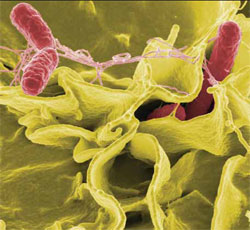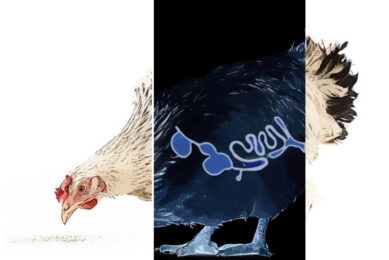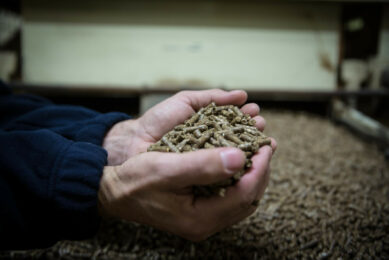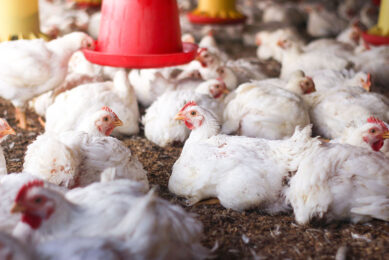Colony shape tells more about salmonella survival in the feed mill

Norwegian researchers investigating the factors affecting the survival of salmonella in feed mills and fish meal factories found that cellulose was not an important factor in the biofilm matrix but that the different colony shapes affect persistence after drying and nutrient depletion in the biofilm.
By Dick Ziggers
Salmonella is a well known contaminant of feed and the feed industry, and the authorities and the industry are using large resources in the fight against salmonella. Despite this, salmonella is still isolated from several different control points in the Norwegian feed and fish meal factory environments and some clones have even been shown to persist in these environments for several years. Biofilm has been shown to be a way for salmonella to persist in the feed and fish meal factory environment.
Biofilms are defined as matrix-enclosed bacterial populations adherent to each other and/or surfaces or interfaces. Several physiological changes like altered growth rate and transcription of different genes have been observed among bacteria in biofilms. Biofilms are both medically and industrially important because they can accumulate on a wide variety of substrates, and bacteria in biofilms are more resistant to antimicrobial agents than their planktonic counterparts.
Matrix components
Previous studies have indicated that salmonella matrix components, such as fimbriae and cellulose, play an important role in the survival of salmonella in the environment. Cellulose is the most abundant biopolymer in nature. It is produced by various species including plants, animals, algae and bacteria. While plants produce cellulose as a structural component of the cell wall, bacteria generally produce cellulose as an extracellular component for mechanical and chemical protection.
Multicellular behaviour based on matrix components by salmonella is often categorised into three groups according to colony morphology when grown on agar plates containing Congo Red and Coomassie brilliant blue dye; rdar (red, dry and rough), bdar (brown, dry and rough) and pdar (pink dry and rough). Colonies without multicellular morphology are called saw (smooth and white). The type morphology is determining for the expression of fimbriae and cellulose (Table 1).
The aim of this study was to look into the distribution and matrix composition of the bdar morphotype among feed and fish meal factory salmonella strains with emphasis on potential differences between the rdar and the bdar strains’ ability to survive in this environment. All investigations were conducted on strains from Norwegian feed and fish meal factories of Salmonella serovars Agona, S. Montevideo, S. Senftenberg and S. Typhimurium along with strains from human clinical cases and reference collection strains. S. Agona, S. Montevideo and S. Senftenberg are frequently isolated from the feed industry, while S. Typhimurium was included due to this serovar being endemic in Norwegian wild life and is one of the most thoroughly studied salmonella serovars in biofilm experiments.
Mainly rough morphology
When screening a total of 148 Salmonella Agona, Montevideo, Senftenberg and Typhimurium strains of feed factory, human clinical and reference collection origin, as many as 99% were able to express rough morphology (rdar or bdar). The dominant morphotype was rdar (74%) but as many as 55% of S. Agona and 19% of S. Senftenberg displayed the bdar morphology.
Inconsistency in Calcofluor binding, indicating expression of cellulose, was found among 25% of all the strains tested but S. Agona showed to be highly consistent in Calcofluor binding (98%).
In biofilm, S. Agona strains with bdar morphology was found to be equally tolerant to disinfection treatment as strains with rdar morphotype. However, rdar morphology appeared to be favourable in long-term survival in biofilm in a very dry environment. Chemical analysis showed no major differences in polysaccharide content between bdar and rdar strains.
The researchers said their results indicate that cellulose is not a major component of the salmonella biofilm matrix.
Conclusions
In conclusion, the present study shows that S. Agona strains classified as bdar morphotype are commonly isolated. The S. Agona bdar strains are highly consistent in not binding Calcofluor, indicating no cellulose expression, in contrast to bdar strains of the other serovars studied. The S. Agona bdar morphotype was in this study found to be equally tolerant to disinfectant treatment as the rdar morphotype, whereas a S. Agona strain classified as rdar morphotype was found to be more tolerant to long-term desiccation and nutrient depletion in biofilm than a S. Agona strain classified as bdar.
There does not appear to be major differences in polysaccharide content between the bdar and the rdar strains. Our results indicate that cellulose is not a major component of the biofilm matrix of S. Agona and S. Typhimurium, but the presence of even small amounts of cellulose contributes to a highly organised structure of the matrix.
Vestby L.K., T. Moretro, S. Ballance, S. Langsrud and L.L. Nesse. 2009. Survival potential of wild type cellulose deficient Salmonella from the feed industry. BMC Veterinary Research. 2009, 5:43 doi:10.1186/1746-6148-5-43.
The full report can be downloaded from here.
Source: FeedTech vol 14 nr 1, 2010











